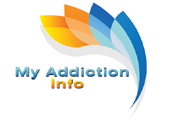
Opioids are a group of synthetic or natural drugs derived from the poppy plant which when taken binds to the brain cells and can relieve pain and produce a euphoric feeling. Medically, opioids are used to treat pain and help provide some relief for patients during surgery, but due to the fact that they provide a feeling of elation when taken, they have been commonly abused. Some of the opioids which are usually abused include heroin, morphine, methadone, oxycodone, fentanyl, and hydrocodone.
What is Opioid Use Disorder?
What's In This Article?
The Diagnostic and Statistical Manual of Mental Disorders, DSM-5, introduced the Opioid Use Disorder (OUD) diagnosis in its fifth edition by combining two other disorders, Opioid Dependence and Opioid Abuse which covers the illegal use of drugs of the opioid class. According to the DSM-5, Opioid Use Disorder is identified or diagnosed when there is a problematic pattern of opioid usage which leads to medically significant impairments as can be observed when at least two out of the 11 criteria are met within a 12-months period.
Instead of the common method of generally referring to the condition as Opioid Use Disorder, the DSM-5 guidelines clearly state that the actual opioid drug being used by the patient be specified in its name in which case you have heroin use disorder.
What do we know about Opioid Use Disorder Crisis?
In 2014 alone over 240 million prescriptions of various forms of opioids were written. It is estimated that over 4000 people start abusing opioids on a daily basis. The cost of the prescription abuse alone is estimated at $55 billion each year, with about $20 billion going into emergency department and inpatient care.
In addition to this huge financial cost is the human cost which is even more significant. 2014 is notorious for having the most deaths on record due to drug overdoses, as over 28,000 people died from opioid-related issues.
In a study to show the real impact of Opioid Use Disorder (OUD), Hser et al. studied 581 people with an average age of 25 who were diagnosed with opiate use disorder (OUD) over a 33 years period and discovered that about 50%, 4% were in jail or prison, 7% were still using Opioids daily and just 22% were abstinent.
While heroin use disorder may be the most common of all, less than 10% of folks between the ages of 12 and 17 in the United States with Opioid Use Disorder take heroin. Most folks (about 11.5 million in 2016, 62.3%) either illegally obtain opioids for pain relief or get a prescription for it and later misuse it. About 53.0% revealed that they got it for a friend or relative while 37.5% confessed to stealing opioids from a health care provider, just 6% revealed that they got opioids from a stranger.
Symptoms of Opioid Use Disorder
The Diagnosis of Opioid Use Disorder typically applies to someone whose usage of opioid drugs meet at least two of the following criteria within a 12 months period.
- Using more opioid drugs than intended.
- Consistently trying to control opioid drug use without any significant success.
- Spending otherwise productive time obtaining, using and or recovering from the effects of opioid drugs.
- Having a strong urge to take opioids.
- Neglecting important home, work or school activities due to opioid use.
- Using opioids, even though they have a negative impact on your personal, business and social life.
- Not participating in important activities due to the use of opioids
- Continue to use opioids even though they are mentally and physically unsafe for you.
- Taking opioids despite having physical and psychological problems
- Continue to use opioids in large quantities after developing tolerance.
- Using opioids despite manifesting symptoms of withdrawal.
Screening: How do I easily check For OUD?
A good number of tools have been developed by addiction experts for people to easily check themselves and determine if they have opioid use disorder. The most common of these screening tools is the CAGE questionnaire as it is easily remembered due to its simple acronym CAGE and its four simple questions. The CAGE is basically an initial assessment, and if your answer is yes to any of the four questions, it is advisable to consider treatment.
C – Means “cut down” – “Have you tried to cut down on your drinking or drug use, but couldn’t?”
A – Means “annoyed” – “Are family and friends annoyed about your drinking or drug use?”
G – Means “guilty” – “Do you ever feel guilty about your drinking or drug use?”
E – Means “eye opener” – “Do you have a drink or use drugs as an ‘eye-opener” in the morning?
The Opioid Risk Tool is a more complex screening tool, which studies the factors that increase the risk of individuals having a substance use disorder. Some of the factors include personal or family history of opioid abuse, any history of psychological disorders, a history of childhood sexual abuse and age.

